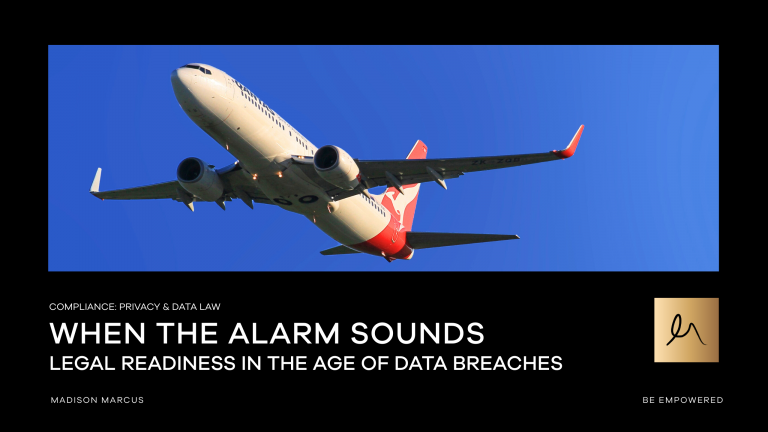Most people consider slavery a historical phenomenon, not something that exists now. However, even though slavery has been abolished in many nations, contemporary slavery is still pervasive. And as the world progresses, society has become more aware of the many different types of exploitation that humans can fall victim to. Exploitation can take many forms, including child labour, fraud, forced labour, human trafficking and domestic servitude.
So what is modern slavery, and what does this mean for your business? The issue of modern slavery is a pressing one, and your business must take steps to address it. A modern slavery statement is one way to do this. This statement outlines the measures your business has put in place to prevent modern slavery from occurring within your organisation.
However, dealing with business legalities can be confusing and time-consuming. This is where Madison Marcus can help. Our experienced team of business lawyers can assist you with drafting your modern slavery statement and providing ongoing support to ensure compliance.
What Is Modern Slavery?
Under Australian law, human trafficking, slavery, servitude, forced labour, debt bondage and forced marriage are all considered exploitative practices and serious offences.
Modern slavery profoundly violates the human rights and dignity of individuals. It is a serious violation in the supply chain and often takes the form of forced labour [1]. This is where workers are coerced into working against their will, under threat of violence or other forms of punishment.
Forced labour can occur in various industries and sectors, including agriculture, mining, construction, manufacturing and domestic work. Child labour is another form of exploitation that often occurs in the supply chain.
In Australia, around 15,000 people are directly affected by modern slavery abuses, and there are more than 40 million victims of modern slavery worldwide. Most of them are located in Asia and maybe a part of the supply chains for products and services entering Australia. Many organisations have intricate supply chains, which impedes the visibility of their numerous direct and indirect suppliers. This makes it more challenging to eradicate contemporary slavery.
Types of Modern Slavery
- Trafficking in persons—Occurs when a person is recruited, transported or harboured for exploitation. This includes forced labour and sexual servitude.
- Slavery—Where a person is owned or controlled by another person and forced to work against their will, under the threat of violence or other forms of punishment.
- Servitude—Where a person is forced to work against their will, under the threat of violence or other forms of punishment.
- Forced marriage—One or both parties are married without their free and full consent.
- Debt bondage—Where a person is forced to work to pay off a debt, and their working conditions are often harsh and exploitative.
- Child labour—Where children are forced to work, often in hazardous conditions.
- Deceptive recruiting for labour or services—Where false promises are used to lure workers into situations where they are exploited.
What Does the Australian Modern Slavery Act Mean for Your Business?
The Australian Government has introduced the Modern Slavery Act 2018 (Cth) to address the prevalence of modern slavery in global supply chains. The first reporting year covered the 2018–2019 financial year. Companies and government agencies based in Australia must now understand their compliance obligations and have a clear strategy for meeting the new modern slavery criteria.
According to the 2018 Commonwealth Modern Slavery Act, entities with more than $100 million in annual revenue are required to report the risks of modern slavery in their operations and supply networks. The Act requires these companies to disclose the presence of modern slavery in their operations and supply chains and the actions they have taken to address the risks. These reports must be publicly available on a company’s website. The Australian Federal Police will also maintain a centralised repository of statements from entities required to make them.
So what are the penalties for non-compliance? Under the Act, entities that fail to comply with the reporting requirements may be subject to civil penalties of up to $1.1 million. The courts may also order a company to take reasonable steps to remedy any failure to comply.
The Australian Modern Slavery Statement must contain the following:
1. The name of the reporting entity;
2. The reporting period for which the statement is made;
3. A description of the structure, operations and supply chains of the business or organisation;
4. The modern slavery risks associated with those operations and supply chains;
5. The actions taken by the business or organisation during the reporting period to address those risks;
6. The effectiveness of those actions in addressing the risks; and
7. Any other information that the Minister may prescribe.
How to Address Modern Slavery in Your Supply Chain
Modern slavery in Australia can occur along the whole supply chain, from harvesting or extracting raw materials, such as cocoa or cotton, to manufacturing and shipping. Children are forced to mine cobalt for the newest mobile phones, whilst women are compelled to produce coffee for one of our most recognisable companies.
Avoiding or failing to adequately address modern slavery in Australia risks in supply chains is morally wrong and can have significant legal and reputational consequences for companies. This is why entities must take a proactive and risk-based approach to manage the risks of modern slavery occurring in their operations and supply chains.
Five effective ways of addressing modern slavery risk are:
- Conducting due diligence on new and existing suppliers.
- Building solid relationships with suppliers.
- Assess potential suppliers before working with them
- Addressing the risk of modern slavery in your organisation through standard risk management practices and reporting standards.
- Training employees and contractors on the signs of modern slavery.
When Do I Need My Next Modern Slavery Statement?
Statements are due six months after the end of a reporting entity’s year. So, if an entity’s annual reporting period is from 1st January to 31st December, the due date for their statement will be 30th June of the following year.
How Madison Marcus Can Help You
Your business may be unknowingly supporting or benefiting from slavery, whether through your supply chain or another part of your business operations. You can help to combat modern slavery in Australia by ensuring that your business does not support or benefit from it in any way.
Companies with $100 million or more in annual revenue must report on their efforts to eradicate modern slavery from their company and supply networks. If your company fits this description, you must know the applicable regulations to operate lawfully.
We, at Madison Marcus, will do anything to make things simple for you. We provide risk assessments, training, audits and remedial plans to help Australian businesses comply with the Modern Slavery Act.For all enquiries, contact us here.







